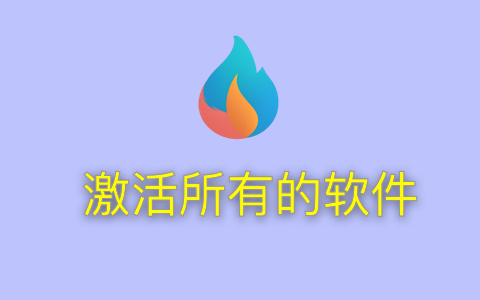1. Go语言简介
Go(又称Golang)是Google开发的一种静态强类型、编译型语言,于2009年正式发布。与Python和JavaScript相比:
- 编译型 vs 解释型:Go是编译型语言(像C++),而Python和JS是解释型语言
- 类型系统:Go是静态类型,Python是动态类型,JS是弱类型
- 并发模型:Go内置goroutine和channel,而Python/JS使用多线程/事件循环
- 性能:Go性能接近C,远高于Python和JS
2. 开发环境搭建
安装Go
官网下载安装包:https://golang.org/dl/
验证安装:
go version 第一个程序:Hello World
比较三种语言的实现:
Go版本:
package main // 声明包名 import "fmt" // 导入标准库 func main() { // 主函数 fmt.Println("Hello, World!") // 打印语句 } Python版本:
print("Hello, World!") JavaScript版本:
console.log("Hello, World!"); Go的特点:
- 必须明确包声明(package main)
- 必须明确导入依赖(import “fmt”)
- 函数必须明确声明func关键字
- 大括号是强制的,不能省略
3. 基础语法
变量声明
Go版本:
// 显式声明 var name string = "Alice" var age int = 25 // 类型推断 var height = 175.5 // float64 weight := 68.2 // 简短声明方式 // 多变量声明 var a, b, c = 1, 2, "three" Python版本:
name = "Alice" age = 25 height = 175.5 a, b, c = 1, 2, "three" JavaScript版本:
let name = "Alice"; const age = 25; let height = 175.5; let [a, b, c] = [1, 2, "three"]; Go的特点:
- 类型可以显式声明或由编译器推断
- :=是声明并赋值的简短形式
- 变量一旦声明必须使用,否则编译错误
基本数据类型
|
类型 |
Go示例 |
Python对应 |
JS对应 |
|
整数 |
var x int = 42 |
x = 42 |
let x = 42 |
|
浮点数 |
var y float64 = 3.14 |
y = 3.14 |
let y = 3.14 |
|
布尔 |
var b bool = true |
b = True |
let b = true |
|
字符串 |
var s string = “hello” |
s = “hello” |
let s = “hello” |
Go的特殊类型:
- rune:表示Unicode码点,相当于int32
- byte:相当于uint8
控制结构
if-else语句
Go版本:
if age >= 18 { fmt.Println("Adult") } else if age > 12 { fmt.Println("Teenager") } else { fmt.Println("Child") } // 带初始化语句的if if score := getScore(); score >= 60 { fmt.Println("Pass") } Python版本:
if age >= 18: print("Adult") elif age > 12: print("Teenager") else: print("Child") JavaScript版本:
if (age >= 18) { console.log("Adult"); } else if (age > 12) { console.log("Teenager"); } else { console.log("Child"); } Go的特点:
- 条件表达式不需要括号
- 大括号是必须的
- 支持在if条件前执行一个简单的语句
for循环
Go版本:
// 传统for循环 for i := 0; i < 5; i++ { fmt.Println(i) } // while风格的循环 n := 0 for n < 5 { fmt.Println(n) n++ } // 无限循环 for { fmt.Println("Loop forever") break } Python版本:
# 传统for循环 for i in range(5): print(i) # while循环 n = 0 while n < 5: print(n) n += 1 # 无限循环 while True: print("Loop forever") break JavaScript版本:
// 传统for循环 for (let i = 0; i < 5; i++) { console.log(i); } // while循环 let n = 0; while (n < 5) { console.log(n); n++; } // 无限循环 while (true) { console.log("Loop forever"); break; } Go的特点:
- 只有for关键字,没有while
- 循环条件不需要括号
- 初始化语句可以使用简短声明(:=)
4. 函数基础
函数定义
Go版本:
// 基本函数 func add(a int, b int) int { return a + b } // 参数类型简写 func multiply(a, b int) int { return a * b } // 多返回值 func swap(x, y string) (string, string) { return y, x } // 命名返回值 func split(sum int) (x, y int) { x = sum * 4 / 9 y = sum - x return // 裸返回 } Python版本:
def add(a, b): return a + b def multiply(a, b): return a * b def swap(x, y): return y, x def split(sum): x = sum * 4 // 9 y = sum - x return x, y JavaScript版本:
function add(a, b) { return a + b; } const multiply = (a, b) => a * b; function swap(x, y) { return [y, x]; } function split(sum) { const x = Math.floor(sum * 4 / 9); const y = sum - x; return [x, y]; } Go的特点:
- 参数类型在变量名之后
- 返回值类型在参数列表之后
- 支持多返回值
- 可以给返回值命名,简化return语句
defer关键字
Go特有的defer语句会将函数推迟到外层函数返回之后执行:
func readFile() { file, err := os.Open("file.txt") if err != nil { log.Fatal(err) } defer file.Close() // 确保在函数返回前关闭文件 // 处理文件内容 } 相当于Python的with语句或JS的try-finally:
Python版本:
with open('file.txt') as file: # 处理文件内容 pass JavaScript版本:
let file; try { file = fs.openSync('file.txt', 'r'); // 处理文件内容 } finally { if (file) fs.closeSync(file); } Go的defer特点:
- 推迟的函数调用会被压入栈中,在外层函数返回时按后进先出顺序执行
- 常用于资源清理(文件关闭、解锁等)
- 参数在defer语句时求值,而非调用时
上篇介绍了Go语言的基础语法,通过对比Python和JavaScript的实现,可以帮助有其他语言基础的开发者快速理解Go的特性。接下来中篇将深入探讨Go的复合数据类型、方法和接口等核心概念。
版权声明:本文内容由互联网用户自发贡献,该文观点仅代表作者本人。本站仅提供信息存储空间服务,不拥有所有权,不承担相关法律责任。如发现本站有涉嫌侵权/违法违规的内容, 请联系我们举报,一经查实,本站将立刻删除。
如需转载请保留出处:https://alljihuo.com/85.html

